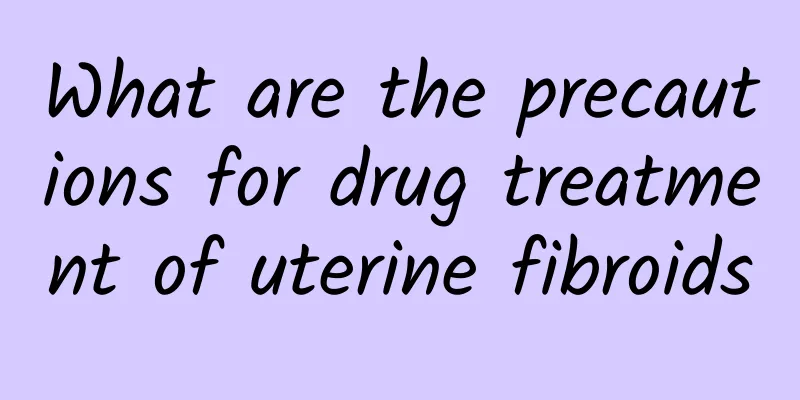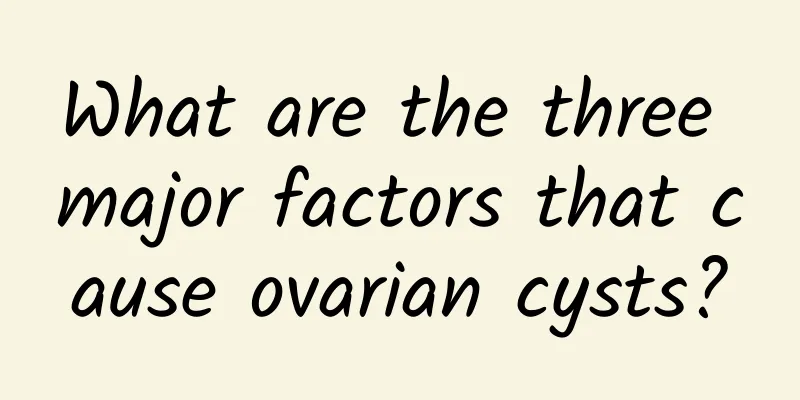What is the treatment for endometrial tuberculosis in a gynecological hospital?

|
Among reproductive system infectious diseases, endometrial tuberculosis is a very common disease. The tuberculosis of the uterine body we are talking about is mainly endometrial tuberculosis. Since endometrial tuberculosis is generally caused by bacterial infection, female friends should pay attention to personal hygiene and cleanliness. Once you find that you have symptoms of the disease, you should go to the hospital to consult a doctor in time. During the treatment, patients should also pay attention to hygiene habits, eat in moderation, keep a regular schedule, and cooperate with the doctor's treatment. 1. General treatment Acute endometrial tuberculosis requires bed rest, preferably in a semi-recumbent position to facilitate the limitation of tuberculosis and the drainage of uterine secretions; hot compresses can be applied to the lower abdomen to promote the absorption of tuberculosis and relieve pain; bowel movements should be maintained to reduce pelvic congestion and facilitate toxin excretion; excessive gynecological examinations should be avoided to prevent the spread of tuberculosis; physical cooling can be used for high fever; liquid or semi-liquid foods that are easy to digest and contain high calories, high protein and multiple vitamins are recommended. Those who cannot eat should be given intravenous nutrition and water supplements and attention should be paid to correcting electrolyte disorders and acidosis 2. Clear uterine cavity residues and other foreign matter Endometrial tuberculosis that occurs after childbirth or abortion, if there is suspected placental tissue residue, should be removed immediately while using antibiotics, but it is better to gently protrude the residue in the uterine cavity, and try not to perform curettage. Curettage can be performed only when the antibiotics reach a certain dose and the tuberculosis is under control to prevent the spread of tuberculosis. If there is active bleeding in the uterus, the uterine cavity can be cleaned with the use of a large amount of antibiotics. For those with contraceptive devices in the uterus, they should also be removed as soon as possible to eliminate the primary lesion and control the spread of tuberculosis. 3. Uterine dilation and drainage and estrogen therapy For chronic endometrial tuberculosis and senile endometrial tuberculosis, the cervical dilation method can be used to facilitate the drainage of uterine secretions and eliminate the cause. Elderly patients can also use a small amount of estrogen IV. Intrauterine Drug Administration For married patients, intrauterine medication can be used. Before the operation, the size and position of the uterus are checked by bimanual examination. The vulva and vagina are disinfected to detect the depth of the uterine cavity. Then the sterilized urinary catheter is inserted into the uterine cavity from the cervical ostium. The depth should be less than 1 cm. The selected drug can be slowly injected into the uterine cavity through the urinary catheter. After all the drug liquid has entered the uterine cavity, the urinary catheter is removed and the patient lies flat or with the hips raised for 1 to 1 hour. Discontinue use during menstruation. Because this method can make the drug act directly on the lesion, it is often effective. 5. Surgical treatment This method is suitable for chronic endometrial tuberculosis caused by submucosal fibroids or polyps. In this case, antibiotic treatment alone is often ineffective, so surgical resection can be considered. According to the length of the disease, endometrial tuberculosis can generally be divided into acute and chronic types. Patients need to determine the treatment method according to their own conditions. Take medicine under the doctor's instructions, do not buy medicine at the pharmacy privately, and do not trust other people's folk remedies. |
<<: Gynecological Hospital explains the prevention of endometrial tuberculosis
>>: Gynecological Hospital talks about the hazards of endometrial tuberculosis
Recommend
How to cure habitual abortion with high cure rate
It is very unfortunate to have habitual miscarria...
Xiangyangfang won the gold medal in the creative whole-grain bread competition
Modern people pay attention to health, and even b...
Can patients with uterine fibroids eat seafood? What are the dietary taboos for patients with uterine fibroids?
Since uterine fibroids have no symptoms in the ea...
Experts explain the causes of irregular menstruation to female friends
According to the latest clinical statistics, a la...
Hollywood's hottest sport! 4 Benefits of Yoga
There are many beauties and artists who continue ...
What are the diagnostic criteria for cervical warts?
Nowadays, the lives and styles of men and women a...
What are the clinical manifestations of pelvic inflammatory disease?
Pelvic inflammatory disease refers to inflammatio...
How to prevent dysmenorrhea effectively
How to prevent dysmenorrhea effectively? Dysmenor...
Treatment of Hyperprolactinemia with Chinese and Western Medicine
In today's fast-paced work and life, many wom...
Fish oil and cod liver oil are very different. Are you taking them right? Nutritionist Chen Yijuan: Don’t eat the wrong foods to lower cholesterol and protect your eyes
Fish oil and cod liver oil are common nutritional...
How big is the uterine fibroid in women?
How big a female uterine fibroid needs surgical t...
Difficulty swallowing after weight loss surgery is actually caused by esophageal achalasia
People with severe obesity may choose gastric byp...
How many eggs can a normal person eat in a day? Is it okay to eat more eggs every day? Aren’t you worried about your cholesterol going off the charts?
How many eggs can a normal person eat in a day? I...
Pelvic ball stress relief exercise will make your body never feel pain again
The first method improves [body aches and pains, ...
Doctors remind: If you have 4 symptoms, menopause may be coming quietly
There are many symptoms of menopause, such as hot...








![[Self-test] Are you a puff girl, a zombie girl, or a muscular man?](/upload/images/67dd150478926.webp)
